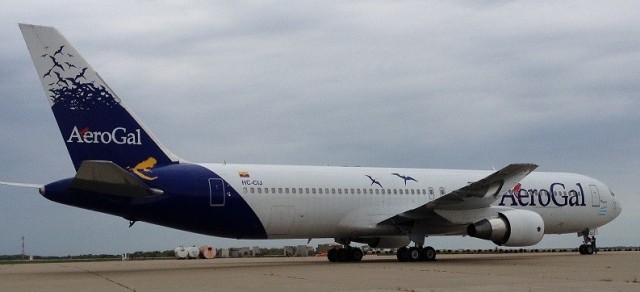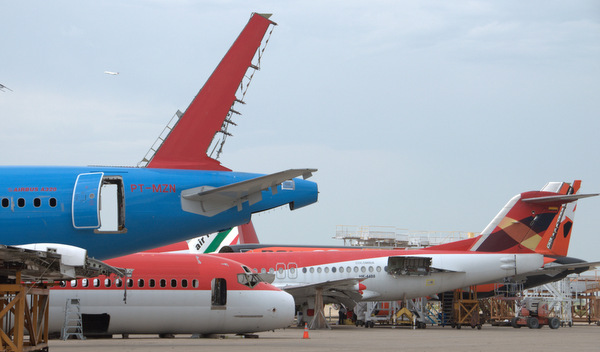This time-lapse from our friends at Jet Midwest offers a rare glimpse into the plane repainting process from start-to-finish. The clip begins with a Sun Country Boeing 737-800 (N804SY) landing at Kansas City International Airport. After a fast and furious time-lapse of less than five minutes, we witness what could easily be mistaken for a brand-new plane heading back to its home base in Minneapolis, MN (MSP).
At first, you see that the paint is noticeably weathered but still beautiful in its own right. In fact, I contend that the 12 year-old paint job, as-is, was arguably more attractive than a brand-new paint job with most of the larger airlines who sport “Eurowhite” liveries (can you tell that I do not like bland liveries?)
BONUS: Lost Airline Livery: An Orange Donbassaero Airbus A320
The paint scheme that Sun Country planes sport is what many AvGeeks would refer to as a “jelly bean” livery; i.e. at the very minimum, a brightly-colored plane. There is however some dissent in the community that argues a true “jelly bean” requires that each plane be slightly different, for example the historic liveries of Braniff seen below.

An in-your-face view of the nose. Photo courtesy of Joe McBride, Kansas City Aviation Department
Today I pay my respects to a little-known (now defunct) Ukrainian airline by honoring their wild livery and individualism. Donbassaero’s bold, in-your-face paint scheme oddly reminds me of something you might see on a 1970s muscle car like the Oldsmobile 442.
This livery and airline is extra special. You see, while the rest of the world’s airlines were trending towards boring, mostly white (read: cheap) liveries referred to as “Eurowhite,” Donbassaero did the opposite.

An AeroGal Boeing 767-300ER. Photo courtesy of Joe McBride, Kansas City Aviation Department.
I’ll be the first to admit it, I absolutely despise Eurowhite liveries. Unfamiliar with Eurowhite? The term refers to an all/mostly white plane with a bit of decoration here and there.
A Eurowhite livery is cheap, boring, uninspired and a huge loss from a branding and brand recognition perspective. Be that as it may, it’s a trend that started in Europe and quickly spread across the world. But not all is lost, let’s examine an airline that managed to take a boring concept and spruce it up a bit. Never thought I’d say it, but this is a Eurowhite livery that I’m a fan of.

Former TAM A320 seen in blue. Two former Avianca birds, an MD-83 and a Fokker F100. Photo by JL Johnson
This is the first in a series of posts I have planned with a focus on the Midwest’s impact on aviation. Dismissed as flyover country by some, much of aviation’s history occurred right here in the middle of the US. It’s not just the past we will be exploring- the Midwest is very much involved in aviation today, and is well positioned to support the evolution of aviation in the future. Join me as we explore the facets of aviation, right here from the heart of America.
What is Jet Midwest? They are a full service MRO (maintenance repair overhaul) firm that is also involved in the purchasing, painting, leasing and recycling of planes.
When Jet Midwest buys planes they are overhauled, leased and/or sold, or parted out. It’s a sad day when a flying machine meets its demise. However, at Jet Midwest, through the sacrifice of one plane, dozens or hundreds more across the globe are able to stay in service. Their motto for what they do: ’œParts to Planes.’
I was recently invited out to tour their huge facility on the southeast corner of the Kansas City International Airport property. The 2.4 million square foot facility, formerly of American Airlines and before that TWA, has hangars that can store multiple 747s, with many more narrow bodies between.


